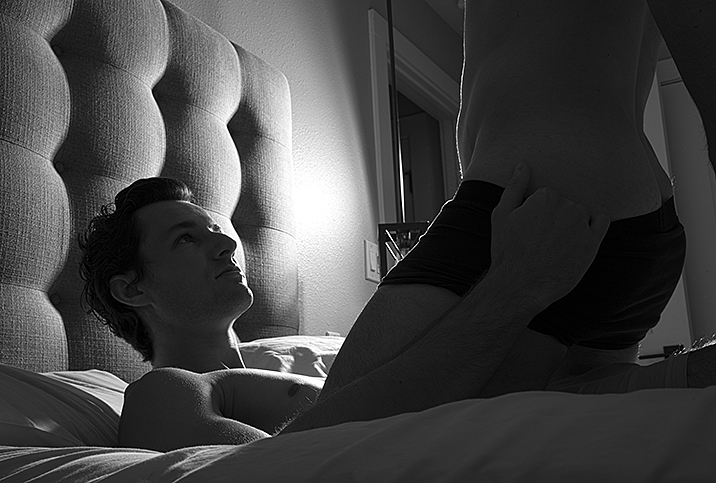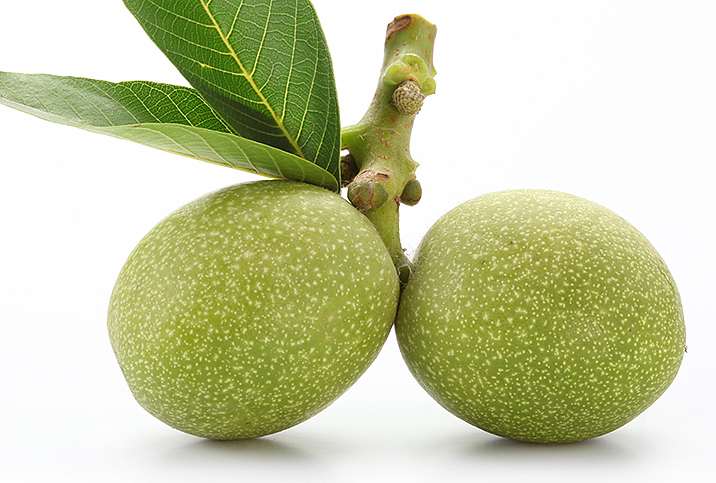An Unlikely Father's Day

My wife, Heidi, and I welcomed our first child into the world in June of 2017. She arrived right on the 6/9 due date like clockwork. Nice.
Within seconds of holding my daughter, Penny, for the first time, I was pretty sure I wanted another. Maybe a few. Maybe as many as we could afford on the combined salaries of a fledgling TV writer and a middle-school teacher.
What I didn't know as I was diving headfirst into fatherhood—those sleep-when-you’re-dead, stains-on-your-favorite-shirt, somehow-no-fun-and-the-best-time-of-your-life days—was that my body was already riddled with cancer. It had started in my left testicle, spread to the lymph nodes in my abdomen and eventually formed a nine-centimeter mass about the size of a softball around my left kidney. In terms of testicular cancer, that's large. The doctors told me I’d been carrying it for years, and had we not caught it then, I wouldn’t have lasted much longer.
It seems that, like my daughter, I was also operating like clockwork: The average age for being diagnosed with testicular cancer is around 33, according to researchers at Johns Hopkins. And while I heard the news at 34, the rock-hard lump I discovered while mindlessly adjusting myself on the couch wasn't skewing any scientific data, even as it was trying to kill me.
Chemotherapy and radiation that can save your life are just as efficient at decimating your fertility.
The good news is that the five-year survival rate for testicular cancer is about 95 percent, meaning most of the 8,000-plus men diagnosed each year will live at least five years post-treatment, and even more if it's caught early. The bad news is the chemotherapy and radiation that can save your life are just as efficient at decimating your fertility. My oncologist, Anishka D'Souza, M.D., reminded me many times that chemo is poison, and very skilled at killing everything in its path. But it’s especially good at killing rapidly growing cancer cells, hair—and sperm.
Before I started three rounds of chemo, my doctors had advised me to schedule trips to a local sperm bank if more kids were in our plans. We had hoped for Heidi to be pregnant right now if not for my diagnosis, so we visited the bank three times for me to make deposits. There was little thrill in this typically oh-so-pleasurable solo act. It wasn't enjoyable. The mouth of the cup seemed dangerously small. And I was terrified, especially since there was little guarantee that any of my boys could swim.
Penny was only about 16 months old—I still don't know why we count the months—when my wife sat her down and explained that the reason dad wasn’t eating dinner was that he was sick. I was only a few days into the throes of chemo. I couldn’t stomach anything. Hell, I could barely move. Being a father can be difficult on the best days, but not being able to lift my still very small daughter much less play with her whenever she wanted was one of the toughest things I've experienced, and not exactly how I envisioned our first years together. But it’d be over soon, we hoped.
Fast-forward to January of 2019, after three cycles of bleomycin and etoposide and cisplatin—the latter is a liquid platinum poison so destructive to the human body that it's administered by someone in a hazmat suit—I was done. I'd never have to sit in that chair again, God willing. The cancer was gone, and it was time to get back to life.
One note here: Scientifically speaking, only one of a male’s testicles is in charge of brewing sperm. If for some reason a person loses one, the other can kick in. That is if everything works properly. And I could definitively say my body wasn't running on all cylinders. After I had my left one removed, there was no way of knowing if it was the best and brightest for sperm creation or the dormant one. And if it was, hopefully, the other would start up. But I was told there was about a 60 percent chance that would happen. Ah, the unknown.
After a few months passed (allowing time for any sperm to rejuvenate), my doctors put Heidi and me in contact with fertility specialist Mary Samplaski, M.D., by all accounts a powerhouse in the field. I shot off yet another sperm sample to be analyzed. After the results came back, she was kind, gentle and incredibly honest about our ability to conceive another child. Lucky for me, my remaining testicle was creating sperm. But the output was almost inconceivably low. She went on to say that “low sperm count” is considered to be less than 10 million to 20 million sperm per milliliter. I had fewer than 100,000 per milliliter, or less than 1 percent of what would be considered a shockingly depressed amount and thus about a 1 percent shot at having a second kid. Got it.
The thrill of being a parent can drive people to sacrifice in ways they didn't know they could for someone they've never met and who may not yet even exist.
For the uninitiated, in vitro fertilization (IVF) is expensive—almost comically so. It costs tens upon tens of thousands of dollars to harvest eggs, incubate sperm and artificially inseminate a womb. And there’s no guarantee it will work, at which point you start the whole thing over—day zero, dollar zero. The entire process is long and painful and emotionally draining.
I’ve had friends go through this. I have friends currently going through this. It’s tough on everyone involved, and there is no easy answer. But no matter what you can accomplish in life, the thrill of being a parent can drive people to sacrifice in ways they didn't know they could for someone they've never met and who may not yet even exist. Some have chosen adoption despite it often being equally as maddening as IVF. Others adapt to their new reality—what else can you do? Maybe this was our new reality, and I was meant to be content.
We decided to start trying to conceive naturally, but set up a meeting with Dr. Samplaski on February 5, 2020, and prepared to dive in. It was gonna suck. But we were ready. That morning before heading in, Heidi found out she was pregnant. Turns out, everyone was right—our chances were just under 1 percent. But they weren’t zero.
Jackson joined the family on October 1, 2020. Perfectly healthy, a complete bruiser. I'm thrilled just to be alive for another Father's Day and even more thrilled to share this first one with my new son. If my boys can keep swimming, maybe we'll get on with adding to the lineup soon.


















